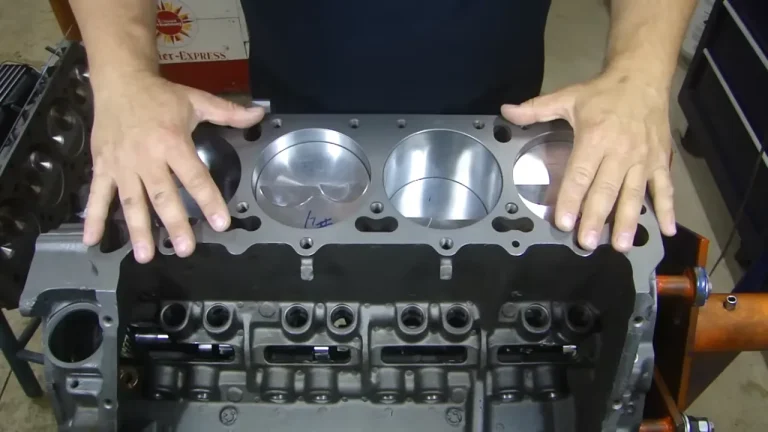Ford Escape Problems: Troubleshooting Tips and Solutions
The ford escape can experience various problems, including transmission issues and electrical malfunctions. The ford escape has been known to encounter a range of issues, such as problems with the transmission and electrical components.
These issues can cause significant inconvenience and safety concerns for owners. It is important for potential buyers to be aware of these problems and to thoroughly inspect any used ford escape before making a purchase. We will discuss some common problems faced by ford escape owners and provide information on how to address and prevent these issues.
By being informed and proactive, you can ensure a smoother ownership experience with your ford escape.
Engine Issues
Recognizing Common Engine Problems
- One of the most important aspects of maintaining your ford escape is being able to recognize common engine problems. By knowing the signs, you can address these issues promptly and prevent further damage. Here are a few key points to help you identify engine issues:
- Overheating and coolant leaks:
- If you notice your engine temperature rising rapidly or the coolant light illuminating on your dashboard, it could indicate an overheating issue. This can be caused by a faulty radiator, thermostat, or coolant leak.
- Coolant leaks are often characterized by a sweet smell, steam coming from the engine compartment, or visible coolant puddles underneath your vehicle.
- Misfiring and rough idling:
- Engine misfires can cause your ford escape to run poorly and result in a rough idle. You may experience a loss of power, unusual vibrations, or a knocking sound. This could be caused by a faulty spark plug, ignition coil, or fuel injector.
- Rough idling occurs when your engine struggles to maintain a steady rpm while at rest. It can be accompanied by a shaky sensation or unusual noises coming from the engine.
Troubleshooting Tips For Engine Problems
- Once you’ve recognized engine problems in your ford escape, it’s important to troubleshoot and address them promptly. Here are a few tips to help you diagnose and potentially resolve engine issues:
- Checking coolant levels and hoses:
- Regularly inspect your coolant levels to ensure they are within the appropriate range. Low coolant levels can lead to overheating.
- Examine the coolant hoses for any signs of wear, cracks, or leaks. Replace them if necessary to prevent coolant leaks.
- Inspecting spark plugs and ignition coils:
- Remove the spark plugs and inspect them for signs of wear, damage, or excessive carbon buildup. Worn-out spark plugs can cause misfiring.
- Likewise, inspect the ignition coils for any visible damage or corrosion. Faulty ignition coils can lead to misfires and rough idling.
Solutions For Engine Issues
- Addressing engine problems in your ford escape may involve some repairs or part replacements. Here are a few potential solutions:
- Replacing faulty coolant components:
- If you discover coolant leaks or a faulty radiator, thermostat, or water pump, it may be necessary to replace these components. Consult with a professional mechanic for the appropriate replacements.
- Repairing or replacing ignition system parts:
- Faulty spark plugs, ignition coils, or fuel injectors may need to be repaired or replaced to resolve engine misfires and rough idling. A qualified mechanic can help diagnose and address these issues.
Remember, addressing engine problems promptly can help prevent further damage to your ford escape. It’s always recommended to consult with a professional mechanic for accurate diagnosis and proper repairs.
Transmission Problems
Signs Of Transmission Troubles In Ford Escape
The transmission is an essential component of any vehicle, including the ford escape. Unfortunately, like any mechanical system, the transmission can experience problems over time. Being aware of the signs of transmission troubles can help you address issues promptly and avoid more significant damage down the line.
Here are some common signs to look out for:
- Slipping gears and delayed shifting: If you notice your ford escape’s gears slipping or experiencing delays when shifting, it may be an indication of transmission trouble. Pay attention to any jerking, hesitation, or revving of the engine when changing gears.
- Transmission fluid leaks: Another sign of transmission problems in your ford escape is the presence of fluid leaks. If you notice red or brownish fluid stains on your driveway or garage floor, it could be a leaking transmission. Low transmission fluid levels can lead to poor performance and potential damage to the transmission.
Diagnosing And Troubleshooting Transmission Issues
When faced with potential transmission problems in your ford escape, it’s crucial to diagnose and troubleshoot the issues accurately. Here are some steps you can take:
- Checking for low transmission fluid levels: Low transmission fluid levels can contribute to various transmission problems. To check the fluid levels, park your ford escape on a level surface, engage the parking brake, and let the engine idle. Locate the transmission dipstick, usually located towards the back of the engine bay, and check the fluid level against the markings on the dipstick.
- Inspecting for damaged transmission seals: Faulty transmission seals can cause fluid leaks and subsequent transmission issues. Inspect the transmission pan, cooler lines, and any visible seals for signs of leakage or damage. If you notice any issues, it may be necessary to replace the worn-out seals to prevent further damage.
Possible Solutions For Transmission Problems
Thankfully, many transmission problems can be resolved with proper care and maintenance. Here are some potential solutions:
- Replenishing low transmission fluid levels: If you’ve identified low transmission fluid as the culprit, replenishing the fluid to the appropriate level can help resolve shifting issues and prevent further damage. Consult your ford escape’s owner’s manual for the recommended type of transmission fluid and proper filling procedure.
- Replacing worn-out transmission seals: In cases of damaged seals, it’s crucial to replace them promptly. This will help prevent fluid leaks and maintain proper transmission function. Professional assistance may be required for this task, as it involves accessing specific components of the transmission system.
By understanding the signs of transmission problems in your ford escape and taking appropriate action, you can help ensure the longevity and performance of your vehicle. Regular maintenance, including fluid checks and seal inspections, can help identify and address transmission issues before they escalate.
If you encounter persistent or severe transmission problems, it’s advisable to consult a qualified mechanic for professional assistance.
Electrical System Malfunctions
Common Electrical Problems In Ford Escape
The ford escape is a popular suv known for its versatility and reliability. However, like any other vehicle, it can experience electrical system malfunctions over time. Here are some common electrical problems you might encounter with your ford escape:
- Battery draining quickly: One of the most common electrical issues in the ford escape is a battery that drains quickly. If you find yourself needing to jump-start your vehicle frequently or notice a decrease in battery life, this could be a sign of an electrical problem.
- Malfunctioning lights and electrical accessories: Another problem you may encounter is malfunctioning lights and electrical accessories. This could include headlights that flicker or dim, interior lights that don’t work properly, or issues with power windows, locks, or the radio.
Troubleshooting Tips For Electrical System Issues
Dealing with an electrical system malfunction can be frustrating, but there are some troubleshooting steps you can take to identify and resolve the problem. Here are a few tips to get you started:
- Testing battery voltage and connections: Begin by checking the battery voltage using a multimeter. A healthy battery should have a voltage reading between 12.4 and 12.6 volts. Additionally, inspect the battery terminals and connections to ensure they are clean and tightly secured.
- Inspecting fuses and relays: Next, check the fuses and relays related to the electrical system. Use your owner’s manual to locate the fuse box, and visually inspect each fuse to pinpoint any that may be blown or damaged. Replace any faulty fuses and test the system again.
Solutions For Electrical Problems
If troubleshooting doesn’t fix the electrical issue with your ford escape, there are some solutions you can consider:
- Replacing a faulty battery: If your battery is consistently draining or not holding a charge, it may be time for a replacement. Invest in a high-quality battery that is compatible with your ford escape to ensure optimal performance.
- Repairing or replacing damaged electrical components: In some cases, the culprit behind electrical problems could be damaged electrical components. If you have identified a specific issue, such as a malfunctioning light or accessory, consider repairing or replacing the affected part to restore functionality.
Remember, if you’re not confident in diagnosing or fixing electrical problems yourself, it’s always best to consult a professional mechanic who specializes in ford vehicles. They have the expertise and tools necessary to accurately diagnose and resolve electrical system malfunctions in your ford escape.
Conclusion
Ford escape has undoubtedly been a popular choice among suv enthusiasts for its versatile design and performance. However, like any other vehicle, it is not free from its fair share of problems. By exploring some common issues faced by ford escape owners, we gained a deeper understanding of the potential challenges that may arise.
From transmission problems to engine troubles and electrical malfunctions, it is important for potential buyers and current owners to be aware of these issues to make informed decisions or seek proper maintenance. It is advisable to consult with a professional mechanic, conduct thorough research, and consider a warranty or extended coverage to alleviate any concerns.
Despite these problems, it should be noted that many ford escape owners have had positive experiences and found their suvs dependable. As with any vehicle, regular maintenance and proper care can go a long way in ensuring a smooth and enjoyable driving experience.
- Why Are My Car Headlights Not Bright Enough? - May 9, 2024
- How Long Can You Drive With An EVAP Leak? - May 9, 2024
- What Does B Stand for in a Car? [Full Guide] - May 9, 2024



